
How to Use VL53L1X: Examples, Pinouts, and Specs
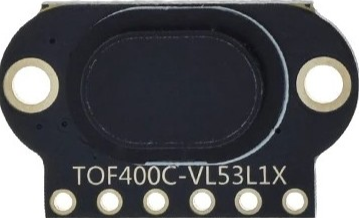
 Design with VL53L1X in Cirkit Designer
Design with VL53L1X in Cirkit DesignerIntroduction
The VL53L1X is a state-of-the-art, Time-of-Flight (ToF) laser-ranging sensor, enhancing the STMicroelectronics FlightSense™ product family. It is a fast and accurate sensor that measures the distance to a target by timing the flight of a very short pulse of laser light. This component is widely used in robotics, user detection, drones, IoT devices, and many other applications where accurate distance measurement is required.
Explore Projects Built with VL53L1X
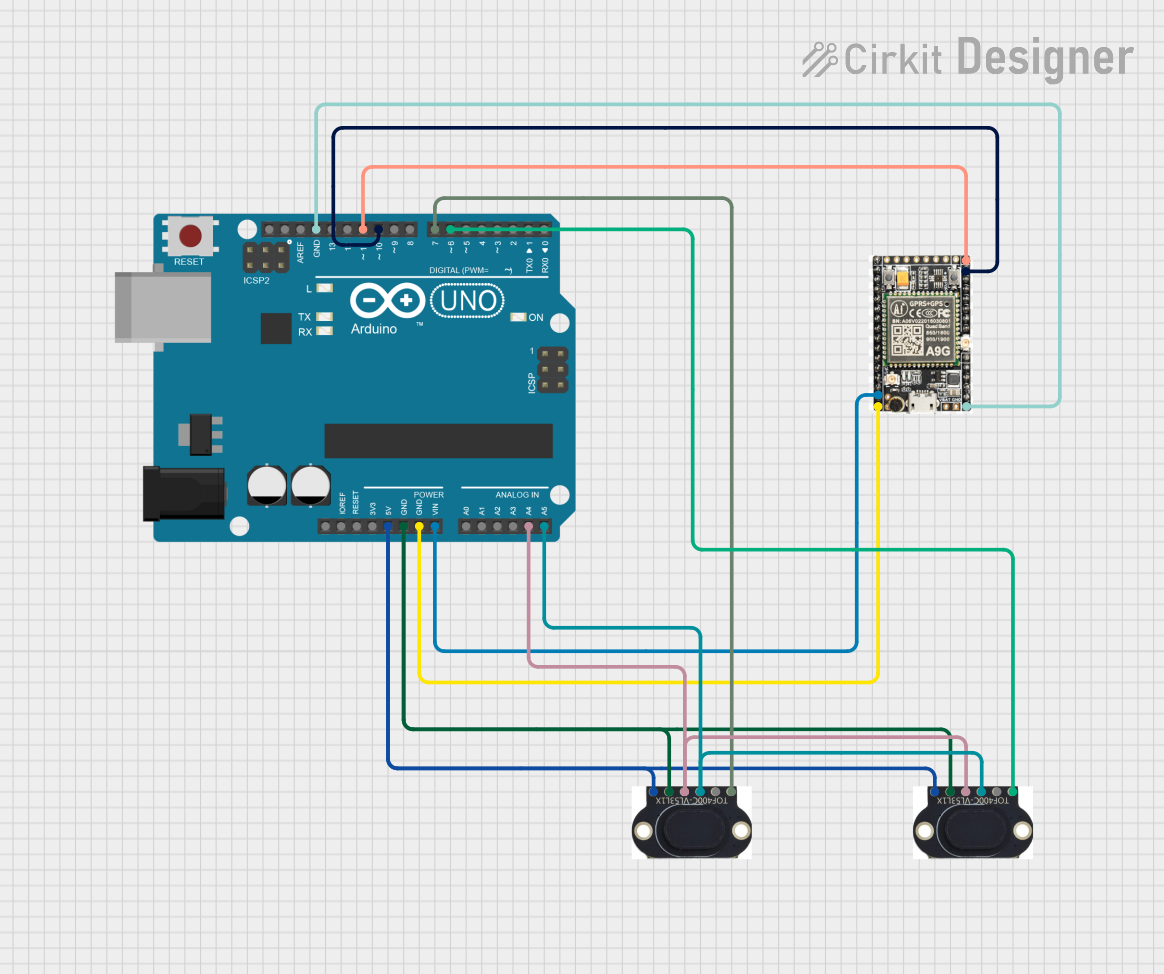
 Open Project in Cirkit Designer
Open Project in Cirkit Designer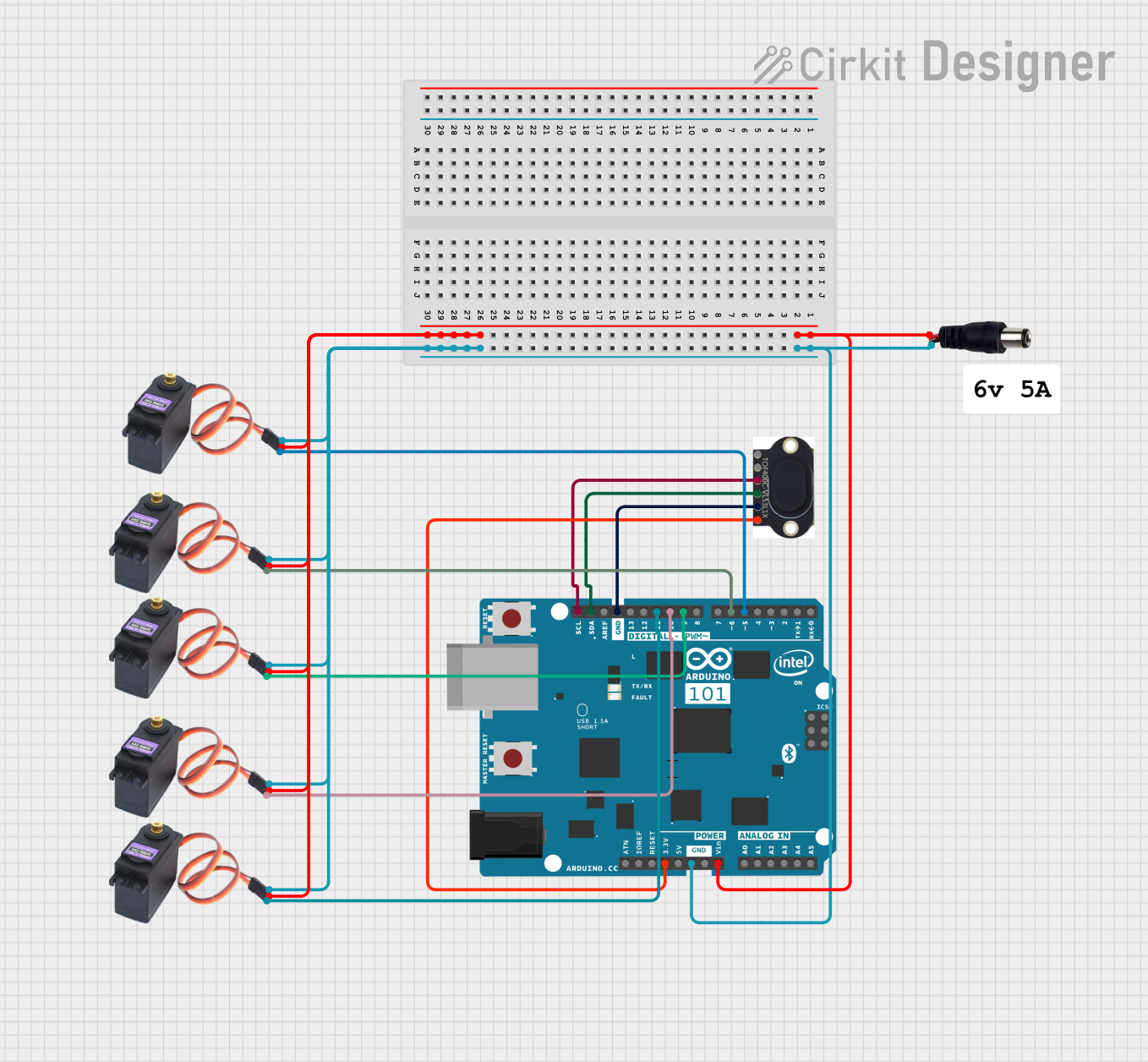
 Open Project in Cirkit Designer
Open Project in Cirkit Designer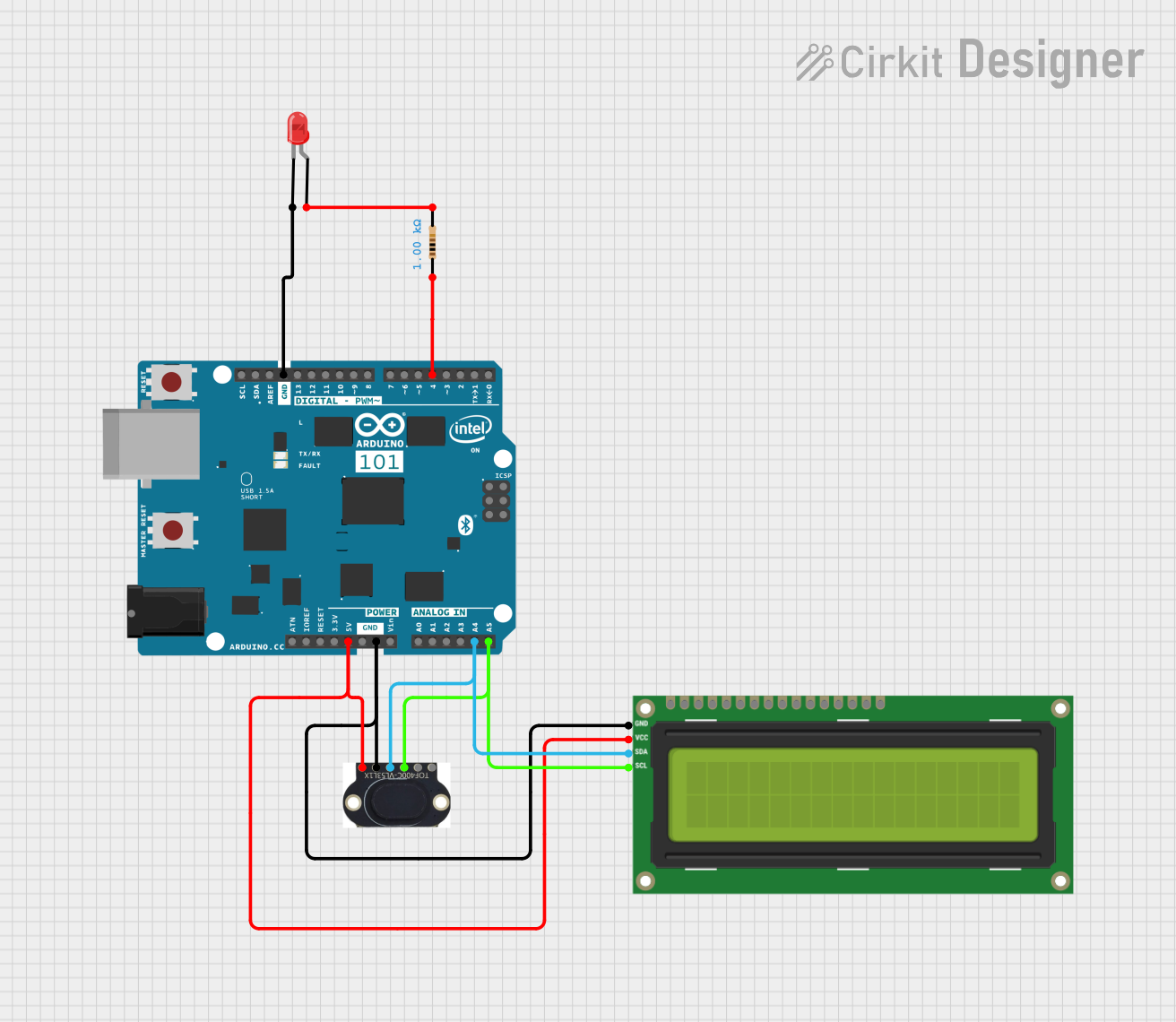
 Open Project in Cirkit Designer
Open Project in Cirkit Designer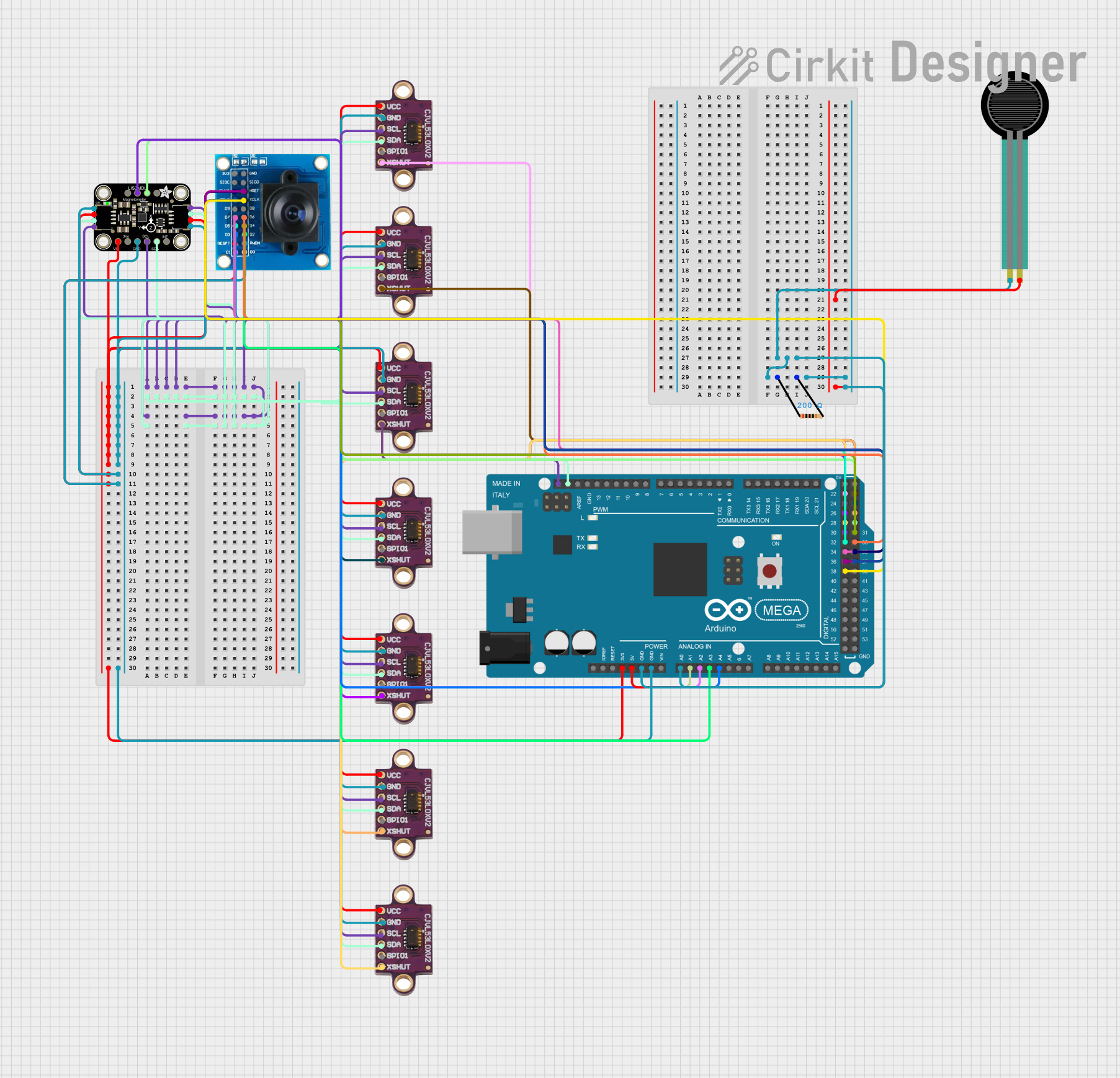
 Open Project in Cirkit Designer
Open Project in Cirkit DesignerExplore Projects Built with VL53L1X

 Open Project in Cirkit Designer
Open Project in Cirkit Designer
 Open Project in Cirkit Designer
Open Project in Cirkit Designer
 Open Project in Cirkit Designer
Open Project in Cirkit Designer
 Open Project in Cirkit Designer
Open Project in Cirkit DesignerCommon Applications and Use Cases
- Autonomous navigation (robots, drones)
- User detection for power-saving
- Object detection and avoidance
- Gesture recognition
- Indoor mapping
Technical Specifications
Key Technical Details
- Type: ToF (Time-of-Flight) ranging sensor
- Operating Voltage: 2.6V to 3.5V
- Peak Current: 20 mA
- Maximum Ranging Distance: Up to 4 meters
- Ranging Accuracy: ±25 mm
- Interface: I2C
- Field of View: 27°
Pin Configuration and Descriptions
| Pin Number | Name | Description |
|---|---|---|
| 1 | VDD | Power supply (2.6V to 3.5V) |
| 2 | GND | Ground connection |
| 3 | SCL | I2C clock line |
| 4 | SDA | I2C data line |
| 5 | GPIO1 | Programmable interrupt output |
| 6 | XSHUT | Active-low shutdown input |
Usage Instructions
How to Use the Component in a Circuit
- Power Supply: Connect the VDD pin to a 2.6V to 3.5V power source and the GND pin to the ground.
- I2C Communication: Connect the SCL and SDA pins to the I2C clock and data lines, respectively.
- Interrupts (Optional): The GPIO1 can be used for interrupt-driven measurements.
- Shutdown Control (Optional): The XSHUT pin can be driven low to put the sensor into a hardware shutdown state.
Important Considerations and Best Practices
- Ensure that the power supply is stable and within the specified voltage range.
- Use pull-up resistors on the I2C lines as required by your microcontroller's I2C interface.
- Avoid exposing the sensor to direct sunlight or strong infrared sources to prevent measurement errors.
- For accurate measurements, ensure that the path between the sensor and the target is unobstructed.
Example Code for Arduino UNO
#include <Wire.h>
#include <VL53L1X.h>
VL53L1X sensor;
void setup() {
Serial.begin(9600);
Wire.begin();
sensor.setTimeout(500);
if (!sensor.init()) {
Serial.println("Failed to detect and initialize sensor!");
while (1);
}
sensor.startContinuous(50);
}
void loop() {
Serial.print("Distance: ");
Serial.print(sensor.read());
if (sensor.timeoutOccurred()) { Serial.print(" TIMEOUT"); }
Serial.println();
}
Troubleshooting and FAQs
Common Issues
- No Data from Sensor: Ensure that the I2C connections are correct and that the sensor is properly powered.
- Inaccurate Readings: Check for obstructions or reflective surfaces near the sensor that may cause incorrect readings.
- Sensor Not Detected: Verify that the XSHUT pin is not being held low, preventing the sensor from starting up.
Solutions and Tips for Troubleshooting
- Double-check wiring, especially the I2C lines and pull-up resistors.
- Use the
sensor.setTimeout()function to handle cases where the sensor does not respond. - Ensure that the sensor is not facing any bright light sources directly.
FAQs
Q: What is the maximum range of the VL53L1X sensor? A: The VL53L1X can measure distances up to 4 meters.
Q: Can the VL53L1X sensor measure distances through glass or transparent objects? A: The sensor may not work reliably through transparent materials as the light pulse may not reflect back correctly.
Q: Is the VL53L1X sensor waterproof? A: No, the VL53L1X is not waterproof and should be protected from moisture and water exposure.
Q: How can I reduce the power consumption of the sensor? A: You can reduce the measurement frequency or use the XSHUT pin to put the sensor into a low-power state when not in use.
Q: Can I use multiple VL53L1X sensors on the same I2C bus? A: Yes, you can use multiple sensors on the same I2C bus by changing their I2C addresses or using the XSHUT pin to selectively activate them.